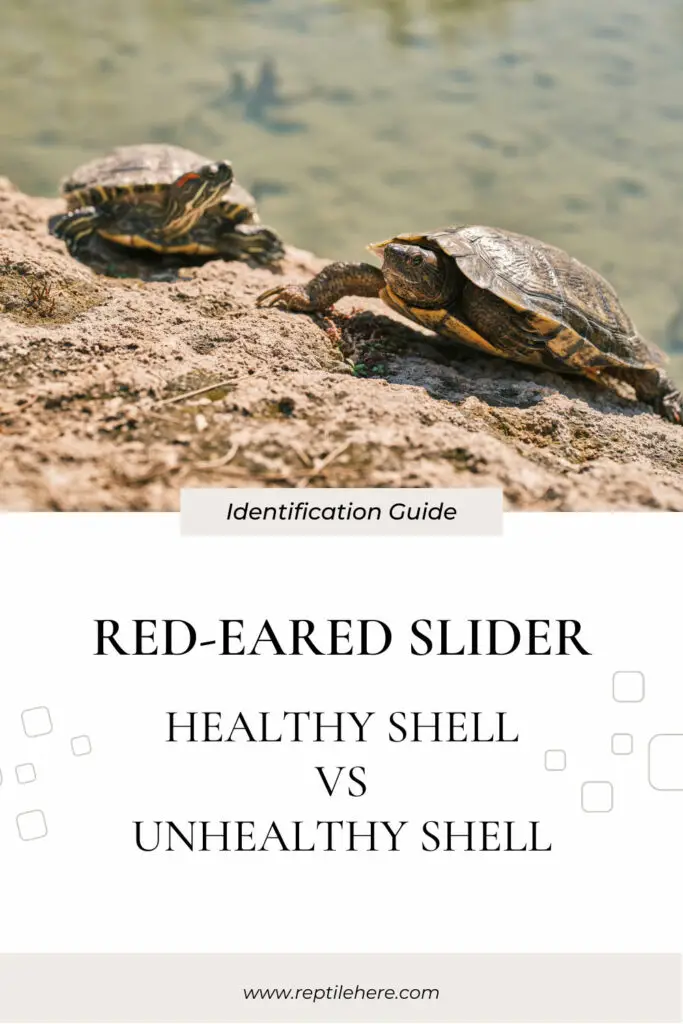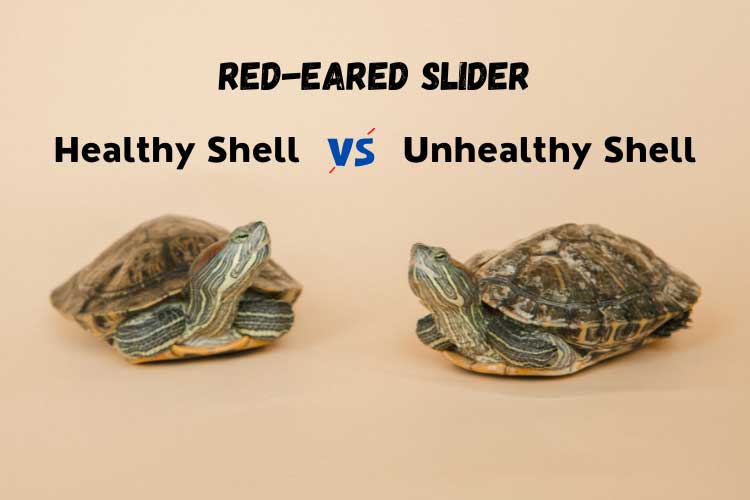Red-Eared Slider Healthy Shell Vs Unhealthy Shell: Identification Guide
If you’re a red-eared slider owner, then you must be able to tell when its shell is healthy or unhealthy. However, this may be challenging if you don’t have much experience with these turtles. But this guide will help you out.
Red-eared slider healthy shell vs unhealthy shell: Red-eared slider healthy shell should be hard, relatively smooth, and dark green. An unhealthy shell usually has discolored spots, soft/brittle spots, abnormal shedding, cracks or damages, abnormal shape, foul odor, etc.
Discover more details below about healthy vs unhealthy shell in your red-eared slider plus tips for keeping your turtle’s shell in top condition.
How do you know if my red-eared slider shell is healthy
Contents
A healthy red-eared slider turtle shell should be hard and relatively smooth, and the top shell (carapace) should have a dark green coloration.
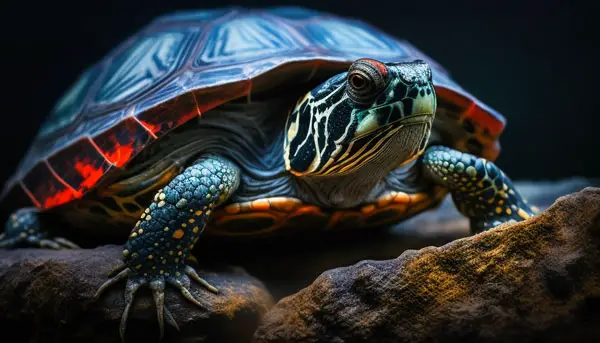
As for a recently hatched red-eared slider, the shell should be slightly soft than that of adults and should have a leafy green shade.
A healthy red-eared slider shell should NOT be soft (except for a baby slider), discolored, pitted, fractured, or showing any signs of bleeding or discharge.
Some traces of algae are okay to have on the turtle’s shell and shouldn’t cause alarm. You can easily wipe them off using a soft bristled brush.
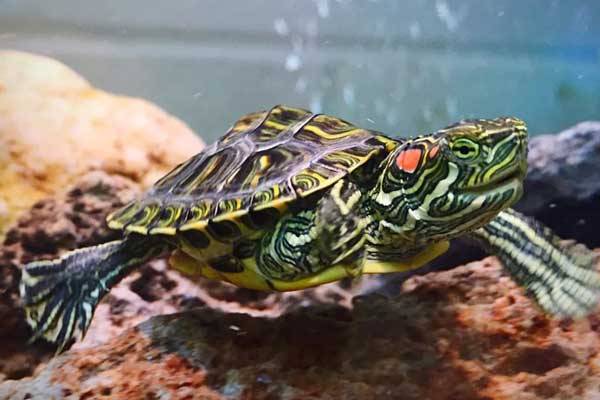
What does an unhealthy red-eared slider shell look like?
Red-eared slider’s unhealthy turtle shell is the exact opposite of a healthy shell. It has discolored spots, feels soft, and may feature cracks or bleeding. The unhealthy shell lacks the smooth feel of turtle shells and may feature blemishes, chips, cracks, pitting, discharge, etc.
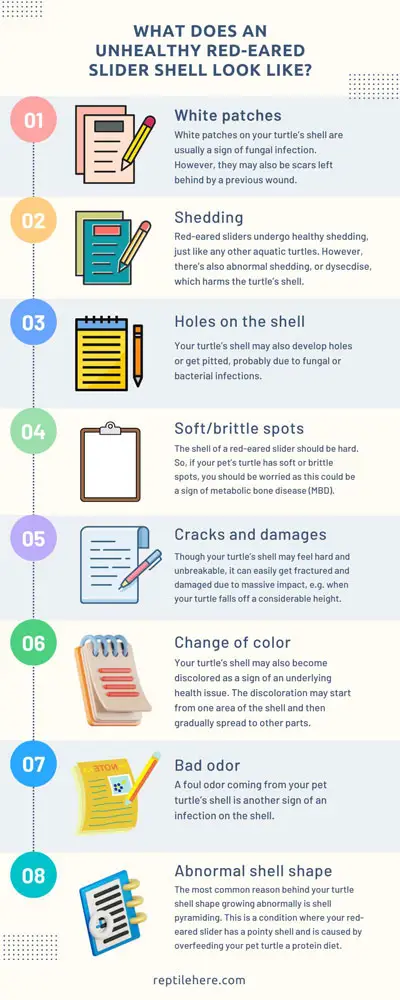
Here are the key signs of an unhealthy shell in the red-eared slider:
White patches
White patches on your turtle’s shell are usually a sign of fungal infection. However, they may also be scars left behind by a previous wound. Sometimes the white patches may also occur n baby sliders when they’re about to shed and indicates healthy growth.
Shedding
Red-eared sliders undergo healthy shedding, just like any other aquatic turtles. However, there’s also abnormal shedding, or dysecdise, which harms the turtle’s shell. Bangla shedding can be caused by many things including overfeeding, severe shell injuries, high ammonia levels in the water, too-low water temperatures, and your slider basking in a heated place.
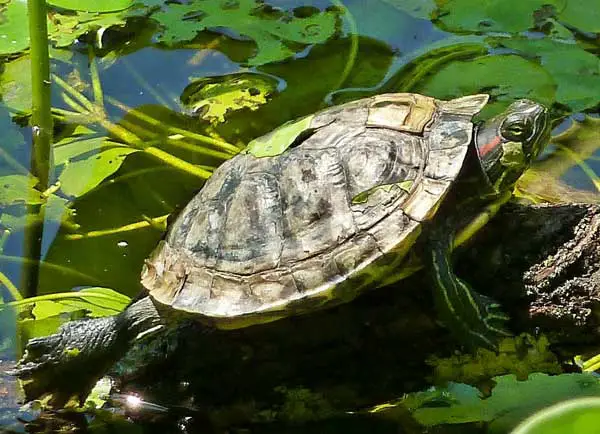
Holes on the shell
Your turtle’s shell may also develop holes or get pitted, probably due to fungal or bacterial infections. In severe cases, the holes may be surrounded by red bloodiness and even bleeding or discharge. However, keep in mind that holes may also appear on your turtle’s shell as scars from previous wounds.
Soft/brittle spots
The shell of a red-eared slider should be hard. So, if your pet’s turtle has soft or brittle spots, you should be worried as this could be a sign of metabolic bone disease (MBD). This issue is caused by calcium deficiency which could be traced to lack of vitamin D3 due to inadequate UV lighting.
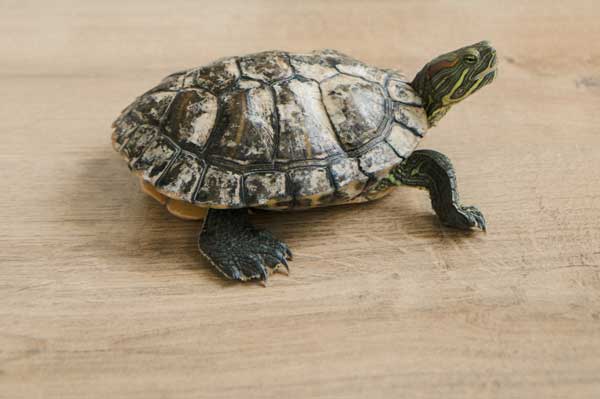
Cracks and damages
Though your turtle’s shell may feel hard and unbreakable, it can easily get fractured and damaged due to massive impact, e.g. when your turtle falls off a considerable height. In most cases, red-eared sliders survive the cracked shell issue if it’s not severe.
Change of color
Your turtle’s shell may also become discolored as a sign of an underlying health issue. The discoloration may start from one area of the shell and then gradually spread to other parts.
Possible causes include fungal or bacterial infection, shell rot, or simply mineral deposits. Fungal and bacterial infections can be caused by lack of basking or poor water quality.
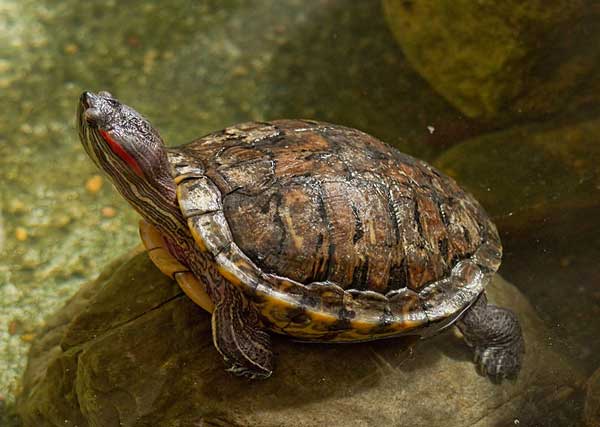
Mineral deposits on your turtle shell appear as whitish buildup and occur if you’re using hard water. Though this isn’t harmful to your turtle, we advise you to address it as soon as you spot it.
Bad odor
A foul odor coming from your pet turtle’s shell is another sign of an infection on the shell.
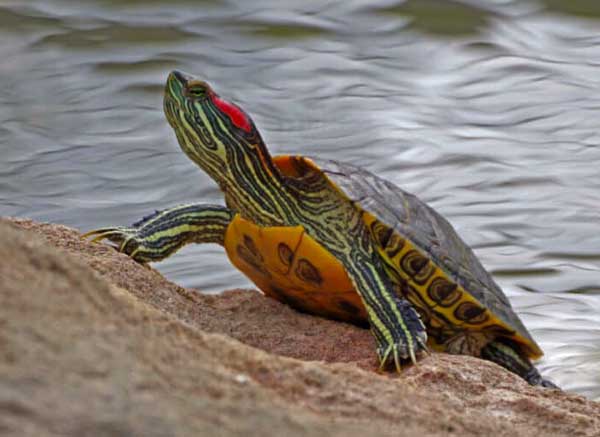
Abnormal shell shape
The most common reason behind your turtle shell shape growing abnormally is shell pyramiding.
This is a condition where your red-eared slider has a pointy shell and is caused by overfeeding your pet turtle a protein diet.
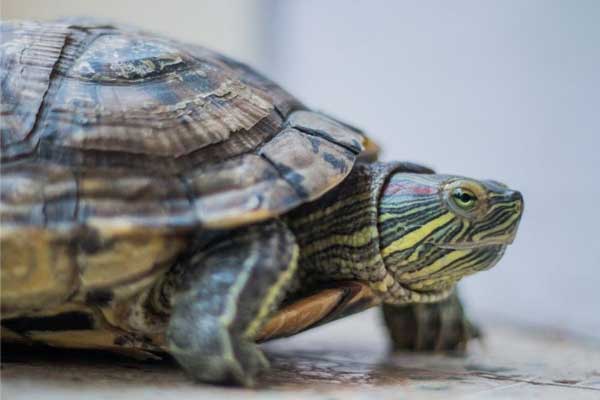
Lack of exercise and insufficient UV light also contribute to shell pyramiding.
If you notice any of the above signs of an unhealthy shell in your slider, we advise you to visit a vet as soon as possible for proper treatment.
How do I know if my red-eared slider has shell rot?
Common signs of turtle shell rot in red-eared sliders include the shell turning soft or spongy, discoloration of the shell to yellow/brown, and the presence of holes or pits on the shell.
Abnormal behavior in your slider such as loss of appetite, lethargy, and spending more time on the basking spot, are additional signs of shell rot.
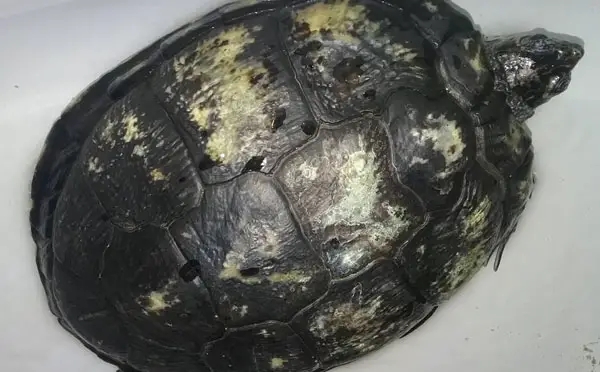
If your suspect that your slider is suffering from shell rot, we advise you to take him to a vet ASAP for treatment before the condition becomes severe.
How do you keep your red-eared slider turtle shell healthy?
You can keep your red-eared slider turtle shell healthy by providing it with suitable living conditions.
Make sure you offer the slider a spacious enclosure and keep its water quality top-notch at all times.
Ensure the turtle has access to UV light for 10-12 hours daily, to mimic its natural habitat.
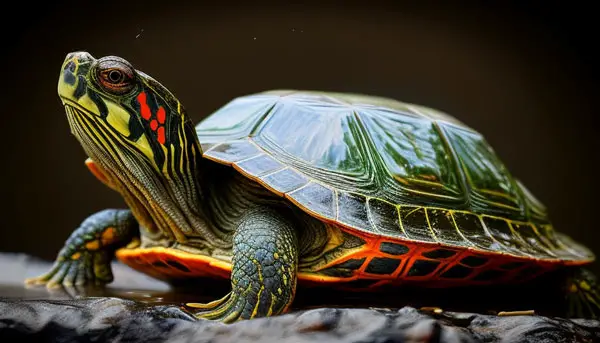
You should also give your turtle a healthy and balanced diet.
Above all, take your turtle to the vet for regular checkups. This can help catch various turtle shell problems in their early stages and treat them before they turn severe.
Final Verdict
A healthy red-eared slider shell should be hard, relatively smooth, with a dark green coloration. Unhealthy shell has cracks, discharge, holes, discoloration, abnormal shedding of scutes, abnormal shape, and bad odor.
If you spot signs of an unhealthy shell in your slider, we advise you to visit your vet as soon as possible to have the issues addressed early enough.
Providing your turtle with suitable living conditions, a healthy diet, and regular vet checkups help keep its shell in tip-top condition at all times.
